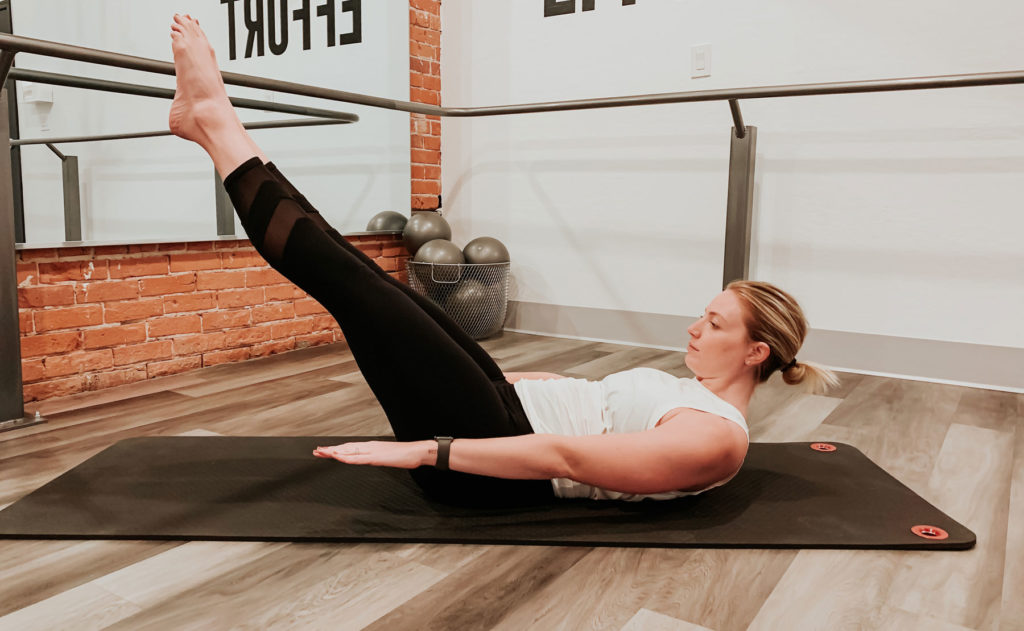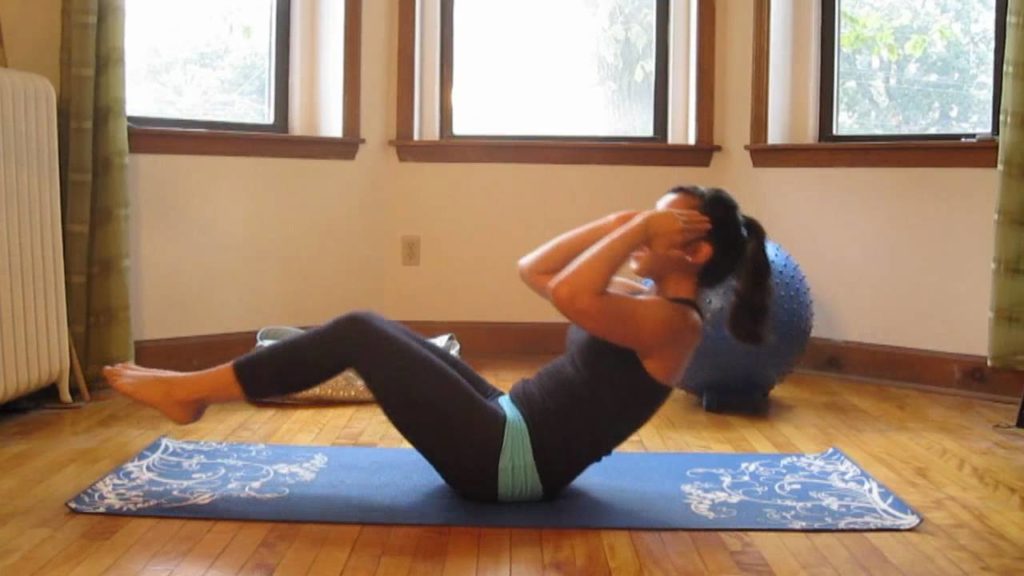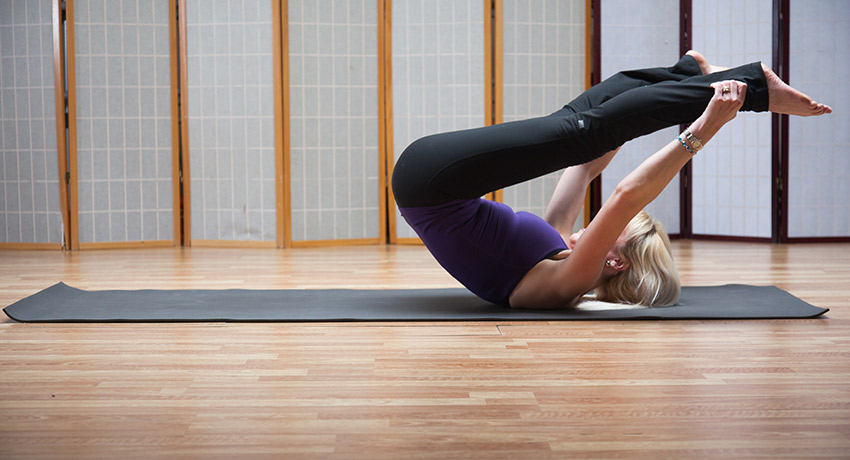According to a recent survey, Pilates continues to be a popular fitness activity in the United States: 9.5 million people participated in Pilates in 2017 (Lock, 2019). Since its humble beginnings in Joseph Pilates’s exercise studio in New York in the 1920s, Pilates has now multiplied into numerous modified workouts offered in various fitness venues from specialized studios to the internet. We can now talk about Pilates-based or Pilates-evolved exercises—only few contemporary programs faithfully follow the 34 exercises described by Pilates as his original Contrology method. Although Pilates (Pilates & Miller, 1998) created his mat work so that we would not need to join a gym or purchase expensive equipment, he also developed some specific equipment to support his system. We typically see the equipment in specialized Pilates studios while the mat-based classes commonly appear in generalized fitness facilities. Pilates (Pilates & Miller, 1998) himself advocated his mat exercise for such health benefits as reduced heart strain, purification of blood, development of lungs, limbering muscles and ligaments, developing good posture and spinal suppleness, and optimal body composition.
Pilates now widely available, also scientists are looking for evidence of its physical benefits. For example, some studies have demonstrated improved body composition, muscular endurance, and flexibility (Kloubic, 2010; Rogers & Gibson, 2009) and reduced non-specific chronic low back pain (Gladwell, Head, Haggar & Beneke, 2006). Older people, particularly their balance, seem to benefit from Pilates (Hyun, Hwangbo & Lee, 2014).

There is now so much research on Pilates that it is possible to review it in a more systematic manner. These reviews not only report the results, but also assess the scientific quality of this research. In their systematic review regarding the positive impact of Pilates on body composition, Alandro-Conzalvo and colleagues (2012) found several flaws in these studies’ experimental design. They called for more empirical evidence to demonstrate any positive change in body composition. Mazzarino and her colleagues (2015) reviewed 13 studies to verify the benefits of Pilates outcomes in women. They found emerging evidence of Pilates reducing pain and improving lower extremity endurance, as well as quality of life, to conclude that “there is a paucity of evidence that Pilates improves women’s health” (p. 2240). Cancela and de Oliveira (2014), who reviewed 17 experimental studies examining the benefits of Pilates for older people, demonstrated that Pilates improved only balance whereas further evidence was need to detect other health benefits.
Although the experimental studies have not provided solid evidence of the physical benefits of Pilates, we must keep in mind that they are typically based on short interventions varying from 4-12 weeks with 2-5 weekly sessions of 45-60 minutes. Neither do they use a unified Pilates modality. Pilates (Plates & Miller, 1998) emphasized that his program had to be performed systematically and regularly to be beneficial and therefore, short-term scientific experiments may not show its health gains. The systematic reviews also pointed to weaknesses in measurement in the studies. As not all benefits of Pilates are directly measurable in a laboratory, these studies may have missed some qualities that make Pilates a good exercise form.
In his work, Pilates (Pilates & Miller, 1998) recognized that happiness is the main reason for being physically fit. We must consider then that although the actual physical benefits of Pilates may not be clearly supported by scientific studies, Pilates exercises do not target only the body. “Contrology,” Pilates asserted “is complete coordination of body, mind, and spirit” (Pilates & Millar, 1998, p. 9). With this ‘trilogy,’ Pilates is now commonly described as ‘mindful’ or a ‘mind-body’ exercise. Its physical practice of core control and stability (or ‘centering’) is supported by concentration and precision coordinated by breathing. The mind controls the muscles, Pilates explained. Therefore, it is important to consider also the psychological benefits of mindfulness in Pilates exercises.
In their study, Cruz-Ferreira and her colleagues (2011) designed a mat based intervention of seven classical Pilates exercises for 62 healthy women aged 25-55 who participated twice a week for a 60-minute class for 6 months. Instead of laboratory measurements, they used questionnaires to determine if the participants’ life–satisfaction and perceptions of physical appearance improved. They concluded that Pilates may slightly enhance the psychological well-being of healthy women. Such non-measurable benefits as the formation of a social network through participating in a group based exercise program may have also contributed to improved life satisfaction.

To dig deeper into these non-measurable benefits of Pilates, Gaskell and Williams (2018) used qualitative focus group interviews to ask about 22 Pilates participants’ experiences. These participants all had chronic musculoskeletal conditions. As a result of regular Pilates practice, the interviewees found their core strength, flexibility, and balance had improved which allowed them to function better in their everyday lives. As a result, their wellbeing and vitality also increased which improved their work performance and gave them energy to participate in their hobbies. When the participants’ posture improved, so did their confidence. In addition to physical benefits, the participants felt relief from tension and stress. Some exercisers found new friends through their Pilates class and ended up socializing with them outside the class. This encouraged them to continue exercising because seeing their friends increased the overall enjoyment of their activity. To gain these benefits, the participants emphasized, the exercises had to be slow, controlled, and executed precisely. In other words, they needed to follow the main principles of Pilates. As one participant explained: “These Pilates exercises seem to be having a better effect because they are more controlled, with centring and explanation and attention to doing specific exercises for your particular problem” (p. 59).
The participants were able to continue Pilates exercises at home once they had learned them correctly to target their ‘deep muscles’ for stability and spine alignment.
In this study, the participants were able to access Pilates classes where the instructors endorsed the core principles of proper Pilates practice. As a result, they were able to enjoy the physical and psychological health benefits of their Pilates exercises at home. Indeed, Joseph Pilates invented his mat work as a low cost, effective exercise program to be performed at home. We now have this option also available through the internet. Do the numerous net-based Pilates workouts endorse the physical and psychological health benefits of Pilates?
I conducted a quick Google search on ‘Pilates workout’ videos. The top ten videos were instructed by young women appearing in sport bras and tights. The workouts ranged from 6 to 35 minutes and promised a mat workout without expensive equipment. The one video openly advertised a Pilates workout to tone abs, butt, and arms. Four others offered a full body workout to tone more than just the abs and another marketed a fat burning workout of HIIT and Pilates combo. Only one video that was intended for beginners included an explanation of Pilates breathing. Other workouts embarked directly into exercises with quite large ranges of motion and with good speed. This was probably necessary to achieve the desired toning benefits in the short duration of each video. While some instructors named the muscles involved in the exercises and included some details regarding their execution, reference to Pilates principles was largely absent. Neither was there reference to the physical and psychological health benefits advocated by Pilates research.
The internet Pilates workouts were designed for women to do them in the convenience of their own home with low cost, yet largely lacked the mindfulness of Pilates. Building the ‘body beautiful’ by toning the typical ‘problem spots’ in our bodies, they targeted the visible ‘mirror’ muscles—rectus abdominis, gluteus maximus, and triceps brachii. While strengthening these muscles can definitely be part of a Pilates program, the purpose is not to train for the fit ‘looks.’ When used to improve posture, Pilates directs attention to our ‘deep muscles’ that are typically invisible. While the net-based Pilates workouts may have engaged some deep muscles, there was not sufficient instruction as to how a home exerciser could include them in the exercises.
The Pilates workout videos in my small sample endorsed the narrowly defined young and thin feminine ideal. As an impossible quest for most women, this creates more unhappiness than life satisfaction when our bodies, despite continued effort, do not turn into model instructor bodies. In these media workouts, Pilates becomes a workout similar to other women’s exercise programs designed to sculpt and tone our bodies in pursuit of the elusive ideal feminine body. As the main idea of Pilates is to create a conditioned body with well-balanced muscle support for optimal posture (Pilates & Miller, 1998), a Pilates exercise program should not be designed to tone ‘the booty’ or build ‘fab abs’ for perfect ‘looks.’ In addition, as a mindful exercise form, Pilates is to bring happiness and satisfaction to our lives instead of dissatisfaction from observing that our bodies just do not match the ideal no matter how hard we exercise.
So, how to obtain the health benefits—pain alleviation, core strength, flexibility, improved posture, better everyday functionality, a social network, enjoyment—that Pilates can offer?
Is it possible to divorce Pilates from body shaping to enjoy its unique mindfulness with core stability, better posture, and muscle strength?

It is clear that the internet based Pilates video workouts do not necessarily focus on these specific benefits. While web workouts can be useful, they are of varied quality and thus, attending a Pilates class with a qualified instructor can better restore some of the key Pilates elements to a workout. Pilates instructors, however, have varied qualifications and participating in a class does not necessarily guarantee adherence to a quality Pilates program. Even an experienced instructor who knows the exercise details well can actually promote them primarily as tools for toning the ‘mirror muscles.’ Based on the research advocating benefits of mindful Pilates practice and to move away from the appearance orientation common in women’s fitness, we can look for the following features in a Pilates class:
- The instructor is certified by an acknowledged certifying body as a Pilates instructor. It is not necessary to wear scant clothing in a mindful fitness class like Pilates. Therefore, the instructor, like the participants, should wear loose and comfortable clothing.
- The class begins with clear focus on Pilates breathing that is then consistently incorporated into the actual exercises. All Pilates exercises have clear phases performed during inhalation or exhalation.
- The instruction focuses on the precise execution of each exercise. This has to include instruction on how to engage some of the deep postural muscles. For example, all Pilates core exercises will include all three levels of abdominals. Pilates core training (or centring) includes equal attention to the spine and abdominals, not only abdominal work. A good instructor will balance the abdominal work with lower and upper back exercises.
- Proper execution of Pilates exercises requires skill. Therefore, the exercisers should be given sufficient time to learn them instead of rushing the ‘workout.’ The exercises should be performed slowly with appropriate progressions and modifications. Even advanced Pilates practitioners perform exercises slowly to obtain the appropriate precision through which to involve the appropriate muscle groups. The tempo of the exercises is determined by breathing and advanced classes are often conducted without music.
- The instruction focuses on improving posture and the benefits that Pilates can have for our everyday movements, not on our appearance.
- Experienced instructors are able to specify what each Pilates exercise is for. They explain the proper technique related to the purpose of each exercise.
- The instructor should direct the exercisers to concentrate carefully on what they do, which muscles they engage, and how breathing supports their movement. This mindfulness is necessary for obtaining all the benefits of Pilates.
Together, these types of classes can also foster a social network of exercisers sharing the same positivity of Pilates. They can also prepare home exercisers to enjoy the benefits of Pilates in their own time. In closing, therefore, as Pilates is definitely much more than an ab workout, let’s enjoy it as a thoroughly mindful practice intended to enhance our everyday living.








